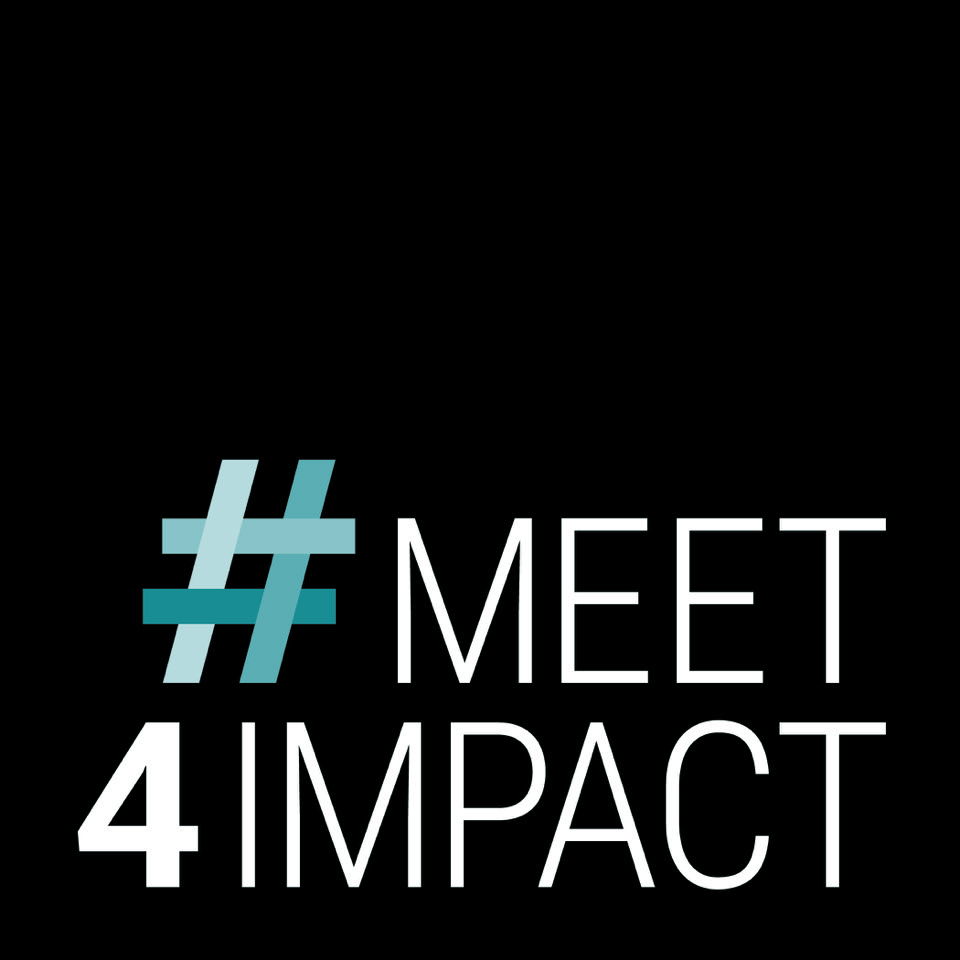In this fourth installment of our #MEET4IMPACT series, Geneviève Leclerc explores the second – out of four – key step needed to achieve a successful impact practice. After defining your initial intention, how do you manage your social impact project? How do you move from theory to action?
When discussing legacy or impact, one is immediately faced with the prevailing discourse that there is an immediate need for measurement. But while impact measurement is necessary to communicate the value generated by one’s actions and justify return on investment from partners investing time and money, it is mostly possible as a result of a well-planned and executed impact management strategy. This article will focus on the key pre-measurement steps that will set the stage for unrolling a robust strategy.
Earlier in July, we discussed how formulating an initial intention of impact with clear desired outcomes would enable an organization to articulate S.M.A.R.T. objectives, while targeting what can be measured and what your organisation can claim responsibility for. We also outlined the crucial efforts in mapping and mobilizing a broad range of stakeholders who have vested interest in what our organization is trying to achieve, and provided guidelines on how to build a logic model enabling us to go from an initial intention of creating impact to identifying all the necessary steps needed to fulfill our objectives.
Assign roles and train your stakeholders
When developing a project and wanting to generate measurable outcomes, it is crucial to engage all interested stakeholders to become facilitators, motivated actors that will help us overcome barriers and yield results.
Let’s look at a fictitious example of an association working in mental health promotion amongst vulnerable demographic groups. It is holding its annual conference in a country where there is a need to build local capacity in the subject matter, support advocacy efforts, so that local organizations operating in that field achieve sufficient funding, and finally develop better training courses. This particular association wishes to develop and deliver a project in that city that would address those needs and create lasting impact, and ultimately would like to be able to measure and communicate the results of this project to a broad range of interested groups.
When doing a stakeholder mapping exercise, the organization would first identify the small team comprised of representatives from the organization (who owns the event) and the leaders of the local organizing committee and the institutions they represent. The representatives from the city’s convention bureau are most likely involved in the project, and potentially the local and regional health authorities as well. The association will also count on the in-house and external professionals involved in delivering and managing the activities around the event.
Then there is a group of stakeholders who are very close to the project and who will be essential in validating various assumptions and initiatives: they are representing the target populations benefitting from the impact of your project and the local or national organizations delivering services to them. In addition, there should be teams tasked with the communication and the sharing of the value around the efforts and the results at various stages of the project, both within the organization and at the level of the local convention bureau and hosting institutions. And, last but not least, there are what we could call the “investigators”, i.e. the individuals involved in data collection and data assessment that will allow the measurement and reporting of the impact.
Each group of stakeholders can be both an enabler and a beneficiary of the impact project, and during the management phase, they would be involved, identifying what their interest is, what they can gain, what they can provide in terms of engagement or resources, and what their role during the project should be. The people directly involved or affected are often the ones that are the most motivated, so your responsibility is to educate them appropriately so that they are comfortable with your objectives, goals, and methodology.
| Need help in developing your legacy project? Meet4impact isa global not-for-profit aiming to build a community passionate about social impact in our sector, helping organisations increase their capacity to generate impact through their activities, deliver more value on their mission and implement positive change. Keep looking out for updates on social media following the #Meet4impact/ #Associations4impact/ #Cities4Impact keywords; check out our website www.meet4impact.global; or write to us at community@meet4impact.global to tell us your story.  |
At #MEET4IMPACT, we have developed several formats of stakeholder workshops, or “impact bootcamps” to deliver basic training on what social impact is and engage your leadership, immediate team and stakeholders in interactive learning experiences. We deliver these as part of stand-alone educational activities or of longer-term impact projects. Our workshops offer various levels of capacity-building depending on the audience, their roles and the scope of the project.
Plan your project with an outcome-focused perspective
When considering developing a project to generate and measure your impact, keep in mind that a social impact approach should be embedded as part of ongoing planning and must complement already existing activities and programs, thus aiming to enhance the mission of your organization and its core value offering.
This means you should build an implementation schedule as well as a communication calendar for your impact project. This will help secure responsibilities so that each stakeholder knows their role, involvement, tasks, the time it will take and the contingency plan if there is a problem. It will also serve to build a story to highlight the value that has been generated by the impact project.
Here, the logic model that you have built in Phase 1 comes handy, as it shows a plausible, clear, logical flow to describe how the planned intervention intends to contribute to the desired change, without any leaps of faith or gaps in logic. The difference between traditional project management as most of us have learned it, and using the logic model to map project steps, is the direction that one adopts when laying out the different steps. In activity-based project management, teams assess resources at hand compared to the outputs they must produce and lay out the activities that are feasible and desirable. In outcome-driven management, project managers are being asked to ensure that their projects are strategically aligned with expectations for very specific outcomes, and the chain is built by working backwards from outcomes to activities.
Which also means that success is not evaluated based on the delivery of the activity (as a vast majority of current initiatives are) but based on its effectiveness at delivering the expected outcomes. Reporting success with traditional performance indicators such as “we held activity or campaign X and Y number of people attended” will no longer be sufficient when ones adopts an impact frame of mind. The tracking, evaluation and reporting of success becomes entirely focused on the change (impact) that was generated, and the activity is a necessary, albeit insufficient, step to achieving this.
Select indicators
Once you have identified the chain of events that the conference will be putting in place, you can identify the potential impacts of these activities, as well as all the “high-impact areas”, i.e. the ones that will yield higher impact for lower effort. These areas are the ones that need to be measured. There are many ways that one can demonstrate that impact has occurred, and a successful legacy project would reveal indicators and results across a spectrum of methods.
We use four major methods to report on the creation of social value, or impact: 1) Storytelling, using qualitative information to relate how changed has happened and how it has affected positively those experiencing it; 2) through indicators that compile quantitative metrics and compare these results over time or against others; 3) quantifying the economic value of your action through generating an increase in well-being, health, quality of life or in any other social gain, done mostly with the help of the Social Return On Investment (SROI) framework; and 4) using the UN Sustainable Development Goals (SDGs) and its set of indicators on report on the social progress achieved.
Assess and manage risk
Risk management in the context of social impact generation is paramount considering the quantity and diversity of the actors involved as well as the time it takes to collect data. Assessing and mitigating risks is not a one-time occurrence but should be an ongoing and iterative process and requires that one re-evaluates the risks while the project is underway. When assessing potential risks, the organization must emit a hypothesis of the likeliness that the risk occurs and the potential consequences if it does and draft a contingency plan for this.
In the case of a first-time impact project, when initiating practice, we recommend that organizations be particularly diligent in a) determining needs and expectations on the front end, and b) its allocation of resources and responsibilities regarding data collection and analysis at the other end, because this is likely where the biggest risks lie.
This article was written by Boardroom partner Genevieve Leclerc. The right to use, part or all of it in subsequent works has to be granted by the Publisher.
